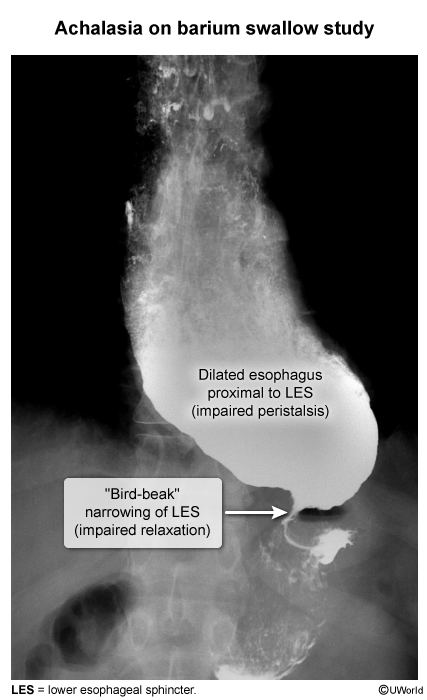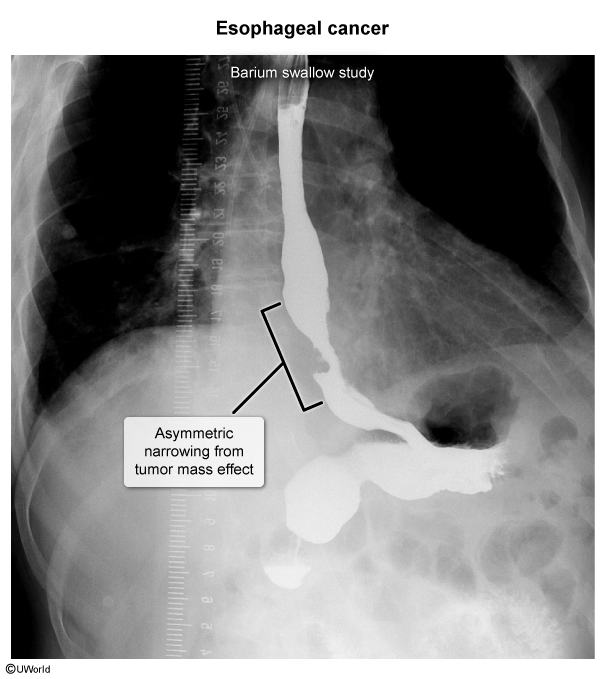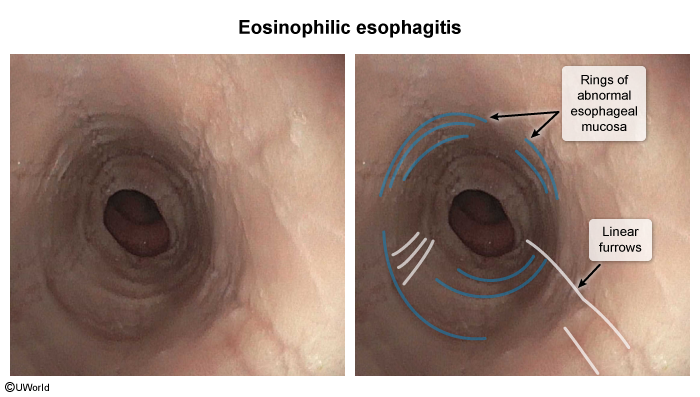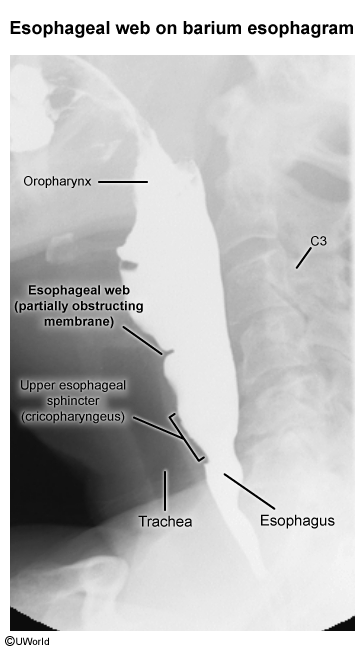Achalasia
Article Sections
Introduction
Achalasia (Greek for "does not relax") is an esophageal motility disorder characterized by incomplete relaxation of the lower esophageal sphincter (LES) and aperistalsis of the lower esophagus. These abnormalities result in dysphagia to solids and liquids, regurgitation of undigested food, and chest pain. Primary achalasia is idiopathic, whereas secondary achalasia is due to diseases (eg, Chagas disease, amyloidosis) that cause esophageal dysmotility similar or identical to primary achalasia. This article focuses on primary achalasia.
Pathophysiology
Normal functioning of esophageal peristalsis and appropriate relaxation of the LES require a balance of inhibitory and excitatory neurons of the myenteric (Auerbach) plexus.
In primary achalasia (Figure 1), nitric oxide–producing inhibitory neurons responsible for smooth muscle relaxation in the lower two-thirds of the esophagus are preferentially destroyed by lymphocytic and eosinophilic infiltrates. Excitatory cholinergic neurons responsible for smooth muscle contraction are relatively spared. This imbalance favoring excitatory neurons causes a functional obstruction at the distal esophagus characterized by aperistalsis in the lower esophagus and constriction of the LES
Continue Learning with UWorld
Get the full Achalasia article plus rich visuals, real-world cases, and in-depth insights from medical experts, all available through the UWorld Medical Library.
Figures
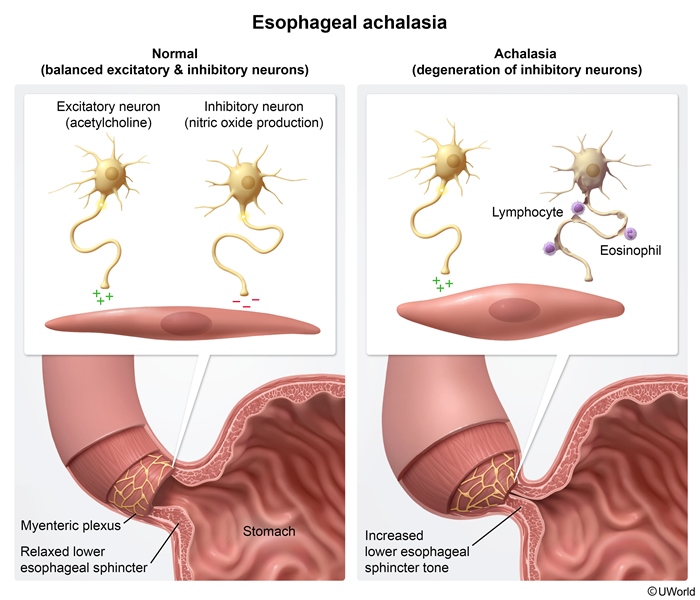
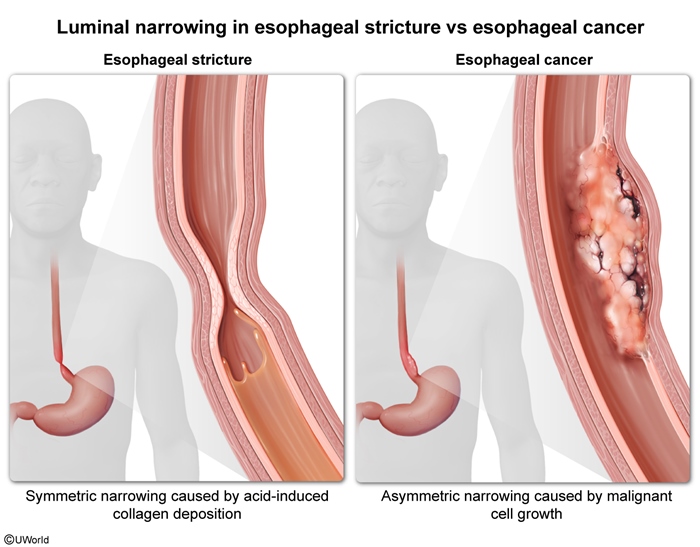
Images
